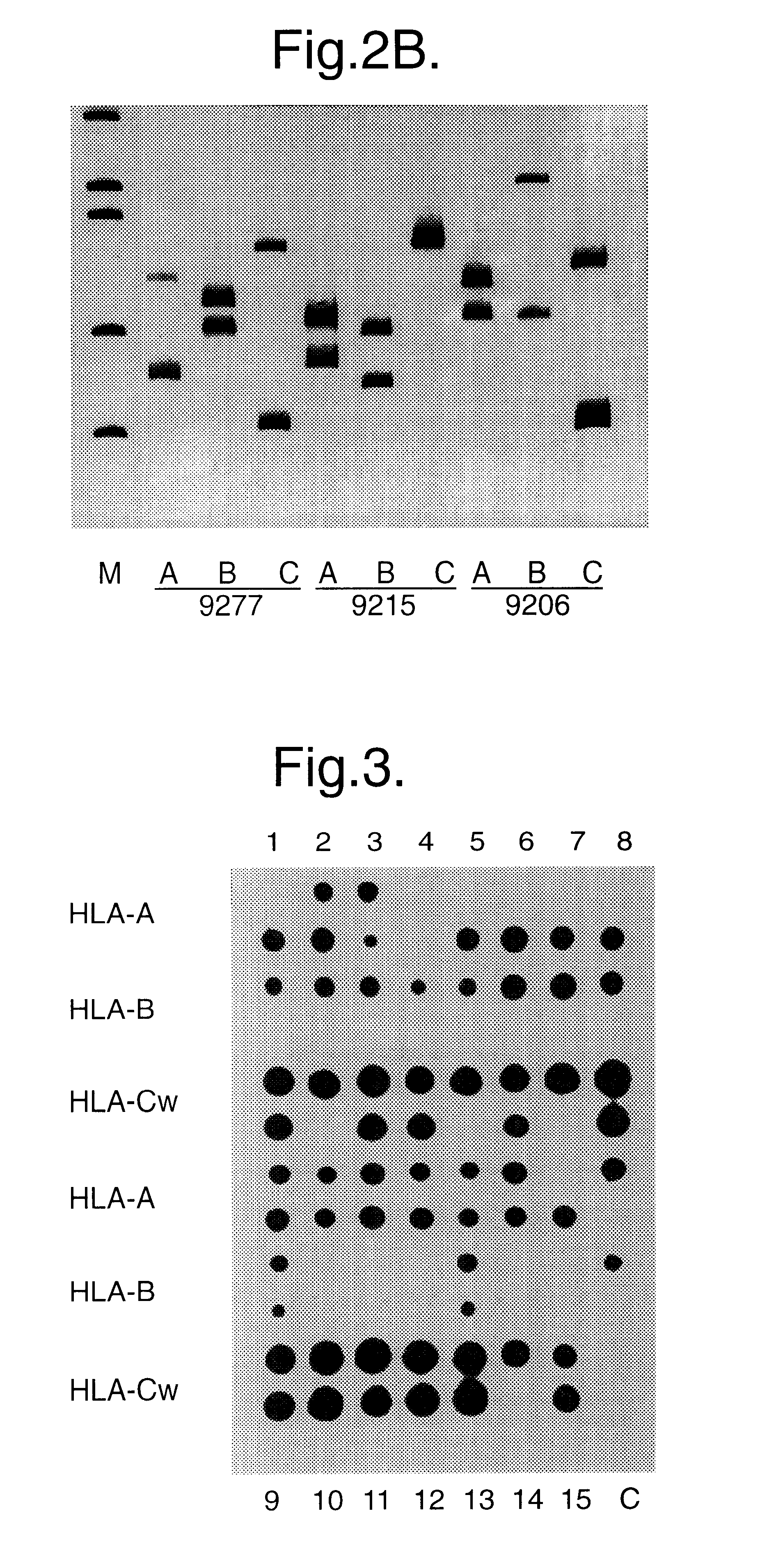Method for identifying an unknown allele
a technology of unknown alleles and methods, applied in the field of methods for identifying unknown alleles, can solve the problems of difficult task of precisely identifying an unknown allele of a polyallelic gene, high graft failure rate of theme transplants, and increased difficulty in identifying genes with a very large number of different alleles
- Summary
- Abstract
- Description
- Claims
- Application Information
AI Technical Summary
Problems solved by technology
Method used
Image
Examples
example
METHODS
1. --Locus Specific Amplification of HLA Class I Genes
For typing purposes, amplification of exons 2 and 3 is desirable, and the primers were therefore selected to amplify the stretch of the genome between intron I and intron 3. The localisation and nucleotide sequences of the HLA locus-specific primers used are given in the reagents section.
PCR reactions were performed in a total volume of 100 .mu.l using 1 .mu.g of genomic DNA and 25 pmoles of each locus-specific primer. The 3' primer was biotinylated at the 5' end. This arrangement ensures the incorporation of the biotinylated primer onto the amplified antisense DNA strand. PCR conditions are given in the following table.
2. --Separation of the Amplified DNA Strands
a) Removal of Non-biotinylated Strand:
Magnetic beads with covalently coupled streptavidin on the surface were added to the PCR product and incubated for 30 minutes at 43.degree. C. In this way the amplified PCR product was immobilised by the interaction of biotin ...
PUM
| Property | Measurement | Unit |
|---|---|---|
| molecular weight | aaaaa | aaaaa |
| molecular weight | aaaaa | aaaaa |
| volume | aaaaa | aaaaa |
Abstract
Description
Claims
Application Information
 Login to View More
Login to View More - R&D
- Intellectual Property
- Life Sciences
- Materials
- Tech Scout
- Unparalleled Data Quality
- Higher Quality Content
- 60% Fewer Hallucinations
Browse by: Latest US Patents, China's latest patents, Technical Efficacy Thesaurus, Application Domain, Technology Topic, Popular Technical Reports.
© 2025 PatSnap. All rights reserved.Legal|Privacy policy|Modern Slavery Act Transparency Statement|Sitemap|About US| Contact US: help@patsnap.com



